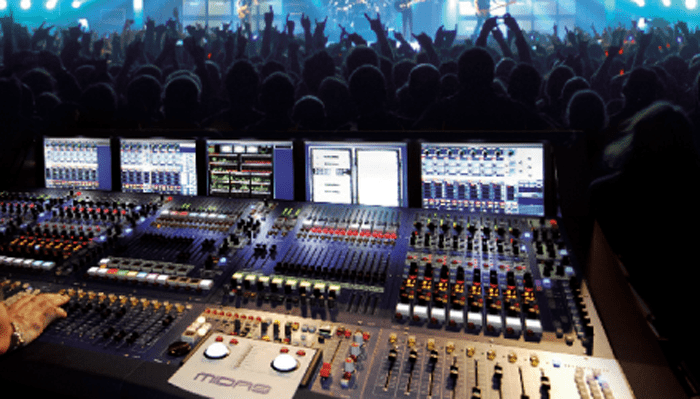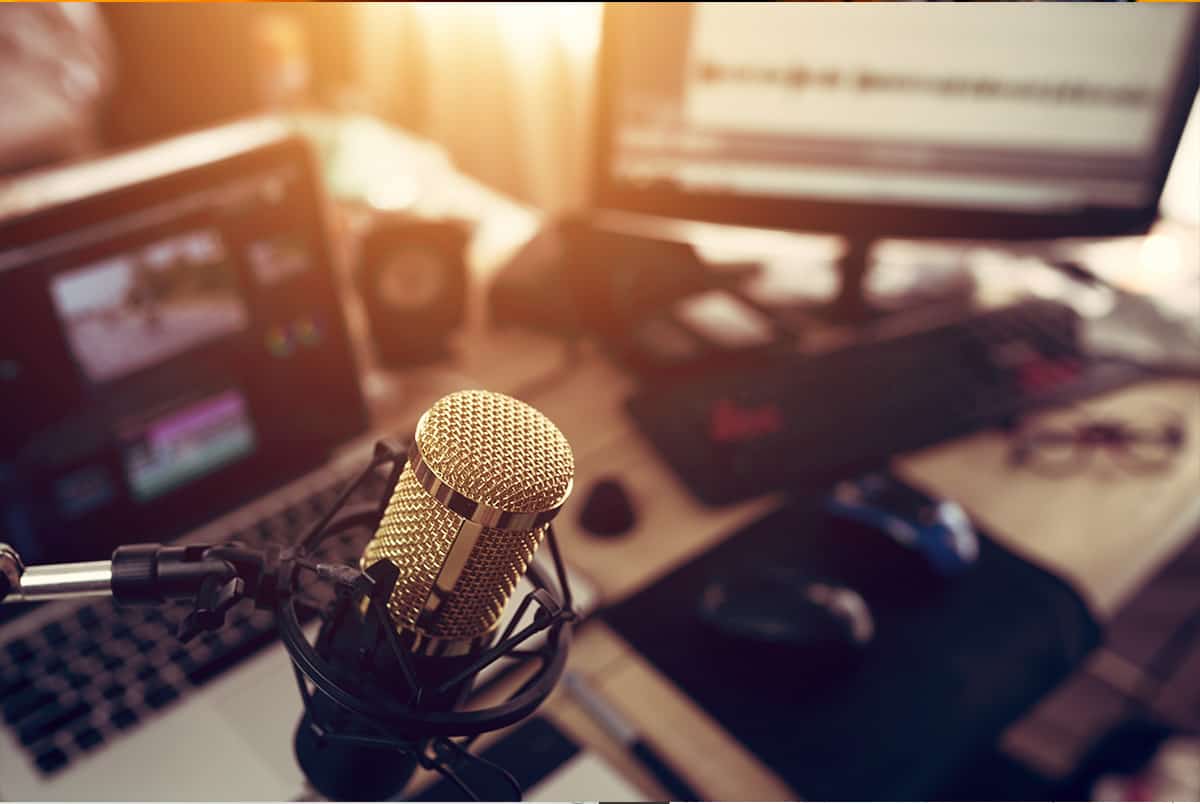When you are passionate about making music, it’s only normal to want to share it -and if you can make some money off it in the process, so much the better.
Getting music out there has always been a major challenge for musicians. Not so long ago, this used to be a long-winded process where you needed to find a talent agent, personal manager, or some other professional who had good connections to record labels and other big names in the music industry.
But times have changed and the arrival of new technologies has transformed every industry -including the music business.
Digital tools and new platforms have made the process of music promotion easier and more accessible to artists. Right now, it’s possible to get your music to reach an audience with minimal financial resources, or even for free.

Free Music Promotion
Once you’ve recorded high-quality tracks, your can upload your music to a third-party service and from there use social media or dedicated platforms to promote your work. The most obvious benefit of taking this approach (apart from the fact that it’s free of charge) is that these platforms are some of the world’s most visited websites. The exposure you can get is potentially limitless, and you also increase the chances of your music going viral.
Also, some of these platforms (like YouTube or Apple Music) allow you to interact directly with your audience instead of relying on the traditional structure where you would need to go through and agent or manager. This means that you can build and nurture your own community in your own terms.
There’s a good reason to start your music promotion campaign online. Although records and CDs have not disappeared, sales are dropping fast, so to promote your music you need to go where you audience is and deliver your work in their preferred format. Online streaming services are now the place to be if you want others to know about your musical work. Now let’s take a look at the different options, their pros and cons, and the best tips to reach as many people as possible.
Apple Music Promotion
The launch of the Apple iTunes store back in 2003 marked a before and after in the world of music promotion, especially when it came to new or unknown artists. Apple’s music software has really come a long way since, from having 200,000 tracks when it was launched to more than 60 million in 2025. In 2018, the company launched a new service called Apple Music, which is a streaming service that can help artists build and grow an audience.
To promote your music here you’ll first need to create an account on Apple Music for Artists. There’s an ID verification process to go through and after that you can submit your work. You can do this yourself, or use a third party service like an aggregator. Either way, once your music is approved, you can then use Apple Music’s dashboard to keep track of how your work is doing.
The pros of using Apple Music
- You’ll have access to very detailed analytics on how your tracks are performing. Looking at audience behavior data can help you understand what works and what doesn’t.
- The platform comes with a range of built-in marketing tools, available in the Tool Box.
- This gives you access to handy badges, widgets, links, and more.
The cons of using Apple Music
- Getting music approved without an aggregator can be time consuming, and is not an option if you only have a few tracks to submit.
- There is a cost involved in using an approved aggregator, as they usually charge or their services either as royalties or as a fixed fee.
Of course, just uploading music doesn’t guarantee you’ll get plays, so here are some tips on how to promote your work on Apple Music.
- Read the guidelines. This may seem obvious, but being familiar with the dos and don’ts will make the entire process a lot smoother. You can find more information about the requirements here.
- Get your music on a playlist. This is the best method to grow your audience, as playlists are one of the main ways in which listeners search for new music. To do this, you can pitch to playlist curators or to influencers. Or you can build your own playlist and cross-promote it via social media.
- Don’t forget about your artist profile and make sure to include a photo, fill in your bio, add links to your website, or even better, upload an EPK (Electronic Press Kit). You can learn EPK basics here.
- Be active on Apple Connect, a dedicated social media platform for music lovers.
 Spotify Music Promotion
Spotify Music Promotion
Spotify was launched in 2008 and was a massive hit right from the start. The platform has over 285 million users and is especially popular in the under 30 demographic.
Although a large percentage of its 50 million+ tracks belong to the Big 4 record labels, there’s still room for new artists to promote their work. The process is similar to one required by Apple Music: you need to claim your profile, confirm your identity on Spotify for Artists, and fill in your artist profile.
The pros of using Spotify
- You can submit songs directly to Spotify’s editors so they can be included in playlists -as long as the songs are new releases.
- The platform itself is free, but you can pay for ad campaigns using Ad Studio. With this tool, you can really dial into audience selection and you set your own campaign budget.
The cons of using Spotify
- You’re only allowed one submission at the time.
- Spotify is known for setting low royalty payments, so although it’s a useful promotion tool, don’t expect to make a living off it.
Tips:
- Focus on building a follower base to bring your music to the top of searches and to be included in user-generated playlists.
- Integrate your Spotify account with your social media profiles and enable one-click sharing.
- Embed the Spotify player in your website. It’s easy, all you need to do is copy and paste a piece of code).
- Host a virtual listening party.
 SoundCloud Music Promotion
SoundCloud Music Promotion
This award-winning streaming service appeared at around the same time as Spotify. Now, more than 20 million artists use it to share and promote their work among the platform’s 270+ million users. Some successful artists like Post Malone and Lil Dicky started on Soundcloud, so although it’s a competitive world, it’s worth giving it a shot. Getting an account is simple and you can choose between free or paid promotion services.
The pros of using SoundCloud
- It’s great for cross-platform promotion, not only in social networks but also in music blogs.
- You have control over who you want to share your work with, as music can be set to private or shared only with select followers.
- In many ways, SoundCloud works like a digital community, since getting in touch with other artists and promoting each other’s work is one of its core functions.
The cons of using SoundCloud
- It can’t compete with Spotify when it comes to displaying curated playlists to listeners, so you may be missing out on plays.
- Audio quality is good, but lags behind other music promotion services.
Tips
- Use the free track download option. You can pick your best songs and offer users a free download, which is great for getting your name out there.
- Add tags to your songs so that they can be picked up by the algorithm and displayed to the users that are most likely to enjoy them and share them.
- Keep track of the real-time commenting feature. SoundCloud comments appear as speech bubbles and show you which parts of the song get the most attention from listeners. At the same time, they give you a place to interact and engage with followers.
- If you have a budget for promotion, use the platform’s Promote tool. This is a paid service and allows you to promote a single song or unlimited tracks.
YouTube Music Promotion
Being the second most popular site in the world, YouTube needs no introduction. The benefits of having a strong and consistent presence on YouTube are clear, no matter what is it that you are trying to promote. The potential for true global visibility is there, unlike some of the platforms we’ve already discussed. For example, Spotify has a strong user base in Europe and the US but not so much in other parts of the world, whereas YouTube is pretty much universal. This site has almost 2 billion active users and a pretty even geographical distribution, including localized versions in more than 90 countries. And by the way, some of the most viewed videos of all times on YouTube are music videos.
The pros of using YouTube
- You get access to extensive analytics in the YouTube Studio function.
- It’s not specifically a music promotion platform, so you don’t need to limit yourself to uploading videos featuring your music. You can expand your content horizons and talk about your creative process, the artists you admire, show your audience what you’ve learned so far, etc.
- You may have to trade profits in exchange for exposure if you get featured by one of YouTube’s music promo channels. However, this may not be so much of a negative if you’re starting in the music industry.
- You may be vulnerable to piracy attacks, as anything you upload to your channel can be downloaded. As an independent musician looking for exposure, you may or may not mind this – it’s your choice.
- Achieve visibility is hard work due to the huge amount of content uploaded every day.
The cons of using YouTube
Tips
- Network and collaborate. If you do some research (whether on YouTube or off-site using your preferred social media platforms), you’ll see that there are many opportunities for collaboration. For example, vloggers may need original sound tracks for their vlogs. The same goes for gamers. Or you could look for music bloggers on YouTube, especially those trying to make a name for themselves as critics.
- Create a content calendar: Consistency is key no matter if you choose to stick to music videos or mix them up with other insights into your life as an artist. Upload often and commit to publishing on schedule.
- Make your comments count. If you love music you will already be following other artists on YouTube. Sadly, the majority of comments are one-liners that don’t add much value. But if you’re into promoting your music, leave a meaningful comment on other artists’ videos and leave a link to your own channel. Just make sure that your comments and links relevant, otherwise they could come across as spammy.
- Optimize your playlist title. Playlists are a default feature of YouTube channels, but giving them the right title could help your music get up in the search results. One way of doing this is by typing your genre or a word related to it in the search bar. That will display the most popular searches for that keyword, and will give you an idea of the type of playlists your audience wants to hear.
- Use hashtags. As it happens with other platforms that use them, hashtags can help you get more views and eventually improve your SEO ranking (how high you rank in Google search results). You can add hashtags either to the video description or to the title. Ideally you’ll want to keep it to 3 to 4 hashtags for each music video you get on your channel.
- Make the most of the description box. This is like prime real estate on the Internet, so don’t skip adding content to it. Among other things, you can include links to your website, social media profiles, calls to action, lyrics, your Patreon page, etc.
Other Free Music Promotion Sites
To reach as many people as possible with your music, you’ll want to cover all your bases and use multiple other outlets to promote your work.
Let’s start with your own website, where you can really take control over your music and promote yourself as an artist. A professional website is not 100% free, as you’ll still need to pay for the domain, hosting, and a theme, but on the plus side, there’s no need to pay somebody else to publicize your music, and you’ll keep any revenue you earn through the site. A website offers alternative ways of promoting your music beyond having tracks in a playlist: you can sell access to exclusive content, live premieres, etc. But don’t just build a website and hope that people will find it – you need to have a content strategy.
Next is Audiomack, a media streaming site that you can use to upload an unlimited number of songs or albums at no cost. Uploading only takes a click of the mouse, but if you want to create a fan base, you’ll need to pitch to the site’s curators. This is done via email, and although there are no guarantees, it’s a tool worth trying -especially since it’s free!
SoundClick is similar to Audiomack, but in addition to offering unlimited uploads, their free plan comes with its own social network. This is something you can exploit to build your audience. There are also monetization options, as you can sell your music or license beats (but be aware that SouncClick keeps part of the profits).
And we couldn’t end the list without mentioning TikTok, which is taking over the net as the most popular short-form content platform. As a musician you can take advantage of its popularity, especially if your ideal listener is under 35 years old. Uploads are limited to 15 to 60 seconds, but the app is great to promote authentic content and local community engagement. Another great thing about TikTok is that it’s a social network that lets you connect with other musicians and support each other’s promotion efforts.
Music Promotion Services & Companies
Some companies specialize in promoting music in the platforms we’ve mentioned above. These services are not free, so if you decide to go this route, you’ll need to shop around to find one that suits your budget. Some of them have different packages on offer, so again, do your research.
What these companies do is run a promo campaign for a number of days and weeks. They may also use the playlist placement method, where your tracks are added to a playlist that the company listens to generate organic exposure. This is a legit way of boosting play figures on your chosen platform.
You can also consider uploading your music to sites that already have a big audience and a focus on entertainment. For example, Vevo offers free video hosting services and much of its content consists of music videos. Right now, Vevo is available as an app in smart TVs and video consoles, but they have huge exposure on YouTube too.
Getting music on Vevo is open to unsigned artists, although the process of getting your work accepted requires working with one of their official content partners, which include both major labels and independent distributors. The partner company will create a Vevo channel in your name, and some may offer additional promotion and distribution services (although Vevo does that anyway). As it happens with other music promotion sites, you’ll need to make sure that your work meets their quality standards, so be ready to either put time into editing or leave it to a professional.
Vimeo is another service you can use to get your music out there. Their focus on artists and their work and the fact that they’re a relatively small community means that the levels of engagement will be higher than in other platforms. Vimeo has always been keen on using the latest technologies. For example, they now support 4k and 360 video, so it’s a great place to provide an awesome experience to anyone watching your music videos.
Other things you may like about Vimeo:
- Their terms are non-exclusive, so you can be on Vimeo and on other platforms at the same time.
- There are several paid packages to choose from, and they come with useful tools like social sharing, personalized options so you can turn your channel into a brand, detailed analytics, live streaming, audience polls, etc.
The Best Ways to Promote Music
Getting noticed as an independent musician it’s not easy, but the good news is that you have many tools and options at your fingertips. Modern music promotion has its advantages. Nowadays there’s no need to stick to one platform or sign an exclusive contract with an agent: you have the chance to promote your music through multiple channels and build an audience, with little investment or for free.
Thanks to technology, you can be your own PR and take your music further, although that requires commitment. If you’re willing to put in the work, you’re likely to see results. Keep trying different platforms so you can decide which one you enjoy the most and gets you the best results.
And don’t forget to have a vision for your music and a plan on how to get it out to your audience.
